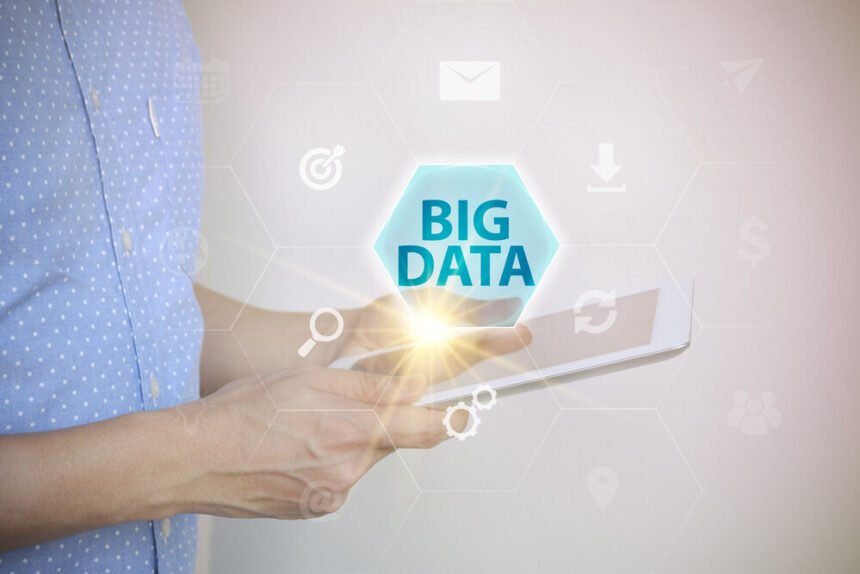Trade shows and other events have been central to many brands marketing strategies for centuries. Attending a Renaissance fair can give you an idea of the types of event marketing strategies that existed all the way back to the 10th century. Contrary to many of claims made by skeptics, trade shows and other exhibitions are not going anywhere anytime soon. The average cost of a lead generated through a trade show is only $2,188, which is 29% lower than most other marketing mediums. Exhibitions and trade show marketing are not being made obsolete by digitalization. Companies are expanding their marketing budgets to use traditional marketing techniques like hiring trade show models and building expensive booths in conjunction with their big data strategies. In fact, exhibition marketers are using big data to hone their strategies in fascinating new ways. Here is a 360 analysis of the future of exhibition marketing in the age of big data.
Big Data Is Making Its Mark On Exhibition Marketing
The role of big data in the exhibition industry was first discussed back in 2015. The Center for Exhibition Industry Research (CEIR) published a report showing that big data was already playing a vital part in the industry. The report showed that big data is playing a much larger role in exhibition marketing than anybody previously predicted. It highlighted over a dozen case studies of organizations that used big data with their exhibition marketing strategy. It also collected input from 307 different marketing executives. Most experts believed that big data was still used by a minority of exhibition marketing professionals, although it was becoming more prevalent. However, the CEIR report showed that 68% of exhibition marketers were already using big data in some capacity or had plans to do so within the next year. This figure was much higher than most people predicted.
How are exhibition marketers using big data?
The prevalence of big data among event marketers isn’t the only variable worth discussing. The actual applications of big data in this age-old field elicit even more interest. Here are some of the ways that exhibition marketers are utilizing big data.
Optimizing attendee marketing strategies
Attendee marketing is the most common application of big data. According to the CEIR report, 95% of all exhibition marketers use big data for this purpose. How does big data help find more people to attend the events? There are a number of applications:
- Big data can help exhibition marketers identify mediums that are best suited for reaching their target audience, especially on Facebook. Most websites and industry publications have detailed records of the demographics of their readers. Since most event marketers know what demographic they need to target, this makes it easy for them to identify the right mediums.
- Exhibition marketers can keep detailed records of the types of outreach advertisements that have worked for them in the past. They can use this data to optimize their campaigns to boost their reach and ensure that the maximum number of people turn out.
- Exhibition marketers know what attendees expect. According to recent research, some demographics prefer pop up exhibition stands at the events they attend. Marketers that are equipped with this information can prepare accordingly.
- Exhibition marketers can evaluate the income levels of likely attendees. This helps make sure that they get the most money out of them as possible.
The ROI of an attendee marketing strategy will continue to increase over time, as marketers collect more detailed data on their customers.
Using predictive analytics to gauge turnout
Forecasting turnout is one of the most difficult aspects of event marketing. According to many analysts, the average turnout is usually around 30% of the people that register for an event. While it is impossible to predict turnout with exact precision, it is possible to use predictive analytics to make a reasonably accurate forecast. A lot of variables come into play, including anticipated weather patterns, other events in the area, and the time of day. Most predictive analytics models are becoming more adept at anticipating turn out, which helps exhibition marketers plan accordingly.
Improving sales results
Increasing sales is another obvious benefit of using big data for exhibition marketing. Big data helps exhibition marketers determine the types of products that are going to be most popular, which helps them plan their events accordingly. The CEIR report shows that 85% of event marketer is that use big data find it helps with their sales marketing campaigns.
Big Data Plays a Big Role in Trade Show Marketing
Digitalization is not making trade show marketing obsolete. The two are being used in conjunction with each other. Big data helps exhibition marketers get the most value out of every possible lead.

